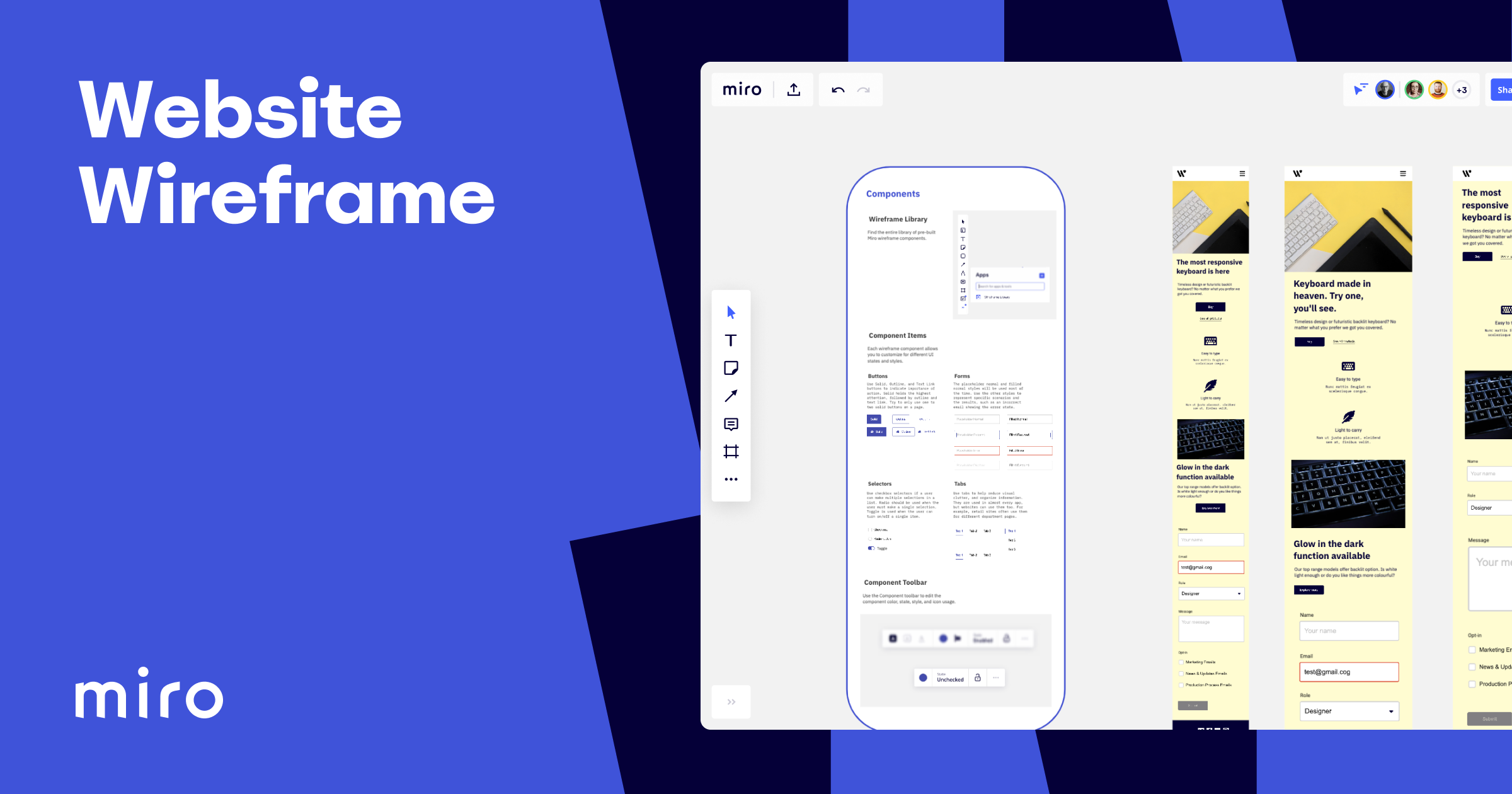Define what a website wireframe .

Define what a website wireframe .
A website wireframe is a simplified visual representation or blueprint of a web page's layout and structure. It serves as a foundational step in the web design and development process, providing a clear and concise outline of how the webpage will be organized including the placement of various elements such as text images, buttons navigation menus and interactive features.
Website wireframes focus on the overall structure, functionality user experience (UX) of a web page, without getting into the details of colors, typography or specific visual design elements. They are typically created using wireframing tools, both digitally and in some cases, through hand-drawn sketches to map out the essential components and their arrangement.
Key characteristics of website wireframes include:
Layout: Defining the positioning of key elements like headers footers, and content areas on the page.
Navigation: Outlining the navigation menu structure including the placement of menus, links, and buttons to ensure intuitive user navigation.
Content Placement: Identifying where text images, videos, and other content will be located on the page.
Functionality: Specifying interactive elements such as forms, buttons, and user interface components, and how they will function.
Visual Hierarchy: Indicating the relative importance and prominence of elements on the page, helping users understand what to focus on.
Responsiveness: Considering how the layout adapts to different screen sizes and devices ensuring a consistent user experience.
Website wireframes are valuable for designers developers clients stakeholders as they provide a shared visual reference that guides the design and development process. They help ensure that everyone involved in few web project has a common understanding of the pages structure and functionality before moving on to the more detailed design and development phases. Wireframes also allow for early testing and feedback reducing the risk of costly revisions later in the project.
Explain its importance in the web design process.
Website wireframes play a pivotal role in the web design process their importance cannot be overstated. Here are several key reasons why wireframes are crucial in the web design process:
Visualization of Layout and Structure: Wireframes provide a visual representation of how web pages layout and structure will be organized. They allow designers and stakeholders to see the arrangement of elements such as headers footers content areas navigation menus. This visualization helps in early decision-making about the overall page structure.
Clarity and Communication: Wireframes act as a common language between designers, developers, clients, and stakeholders. They facilitate clear communication by offering a shared visual reference. Designers can convey their ideas and intentions effectively, and clients can provide feedback based on a tangible representation of the webpage's structure.
Focus on User Experience (UX): Wireframes prioritize the user experience. By outlining the placement of key elements, wireframes ensure that the webpage is designed with usability in mind. They help designers think about how users will interact with the site, making navigation intuitive and content easily accessible.
Early Problem Identification: Wireframes allow for early identification of potential issues in layout and functionality. Designers and stakeholders can review the wireframes and spot any problems with navigation, content organization, or user flow. This early detection of issues can save time and resources in later design phases.
Efficient Design Process: Starting with wireframes before moving on to detailed visual design and coding streamlines the web design process. Designers can make structural adjustments and iterate on wireframes quickly, without the distraction of visual design elements. This efficiency leads to faster project development.
Client and Stakeholder Involvement: Wireframes enable clients and stakeholders to participate actively in the design process. They can provide feedback and suggest changes at an early stage, ensuring that the final website aligns with their goals and expectations.
Responsive Design Planning: Wireframes help designers plan for responsive web design. By considering how the layout adapts to different screen sizes and devices in the wireframing phase, designers can create a consistent user experience across a wide range of platforms.
Cost Reduction: Identifying and addressing design issues early in the process reduces the need for costly revisions and adjustments later on. This cost-effective approach ensures that the project stays within budget.
Improved Collaboration: Wireframes encourage collaboration among team members. Designers developers and content creators can work together more effectively when they have a shared understanding of the webpages structure functionality.
Guidance for Visual Design: Once the wireframes are approved, they serve as a guideline for the visual design phase. Designers can focus on the aesthetics and visual elements, knowing that the underlying structure and layout are well-defined.